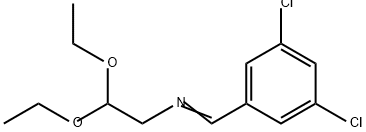Description
BAY 87-2243 (1227158-85-1) potently inhibits HIF-1 reporter gene activity (IC50?= 0.7 nM) and CA9 protein expression (IC50?= 2.0 nM).1?It inhibited HIF-1α and HIF-2α protein accumulation in hypoxic H460 cells and reduced tumor weight in nude mice inoculated with H460 cells. BAY 87-2243 potently inhibits mitochondrial complex I activity (IC50?= 10 nM in mitochondria isolated from PC3 cells) leading to its HIF-1 effects. It has no effect on mitochondrial complex III. BAY 87-2243 reduced melanoma tumor growth?via?its targeting of mitochondrial complex I.2,3
Uses
BAY 87-2243 is a highly potent and selective inhibitor of hypoxia-induced gene activation. It is found to inhibit HIF-1α and HIF-2α protein accumulation under hypoxic conditions in non-small cell lung cancer cell line H460. It inhibits mitochondrial complex I activity and therefore may be used in antitumor treatment to overcome chemo- and radiotherapy- resistance of hypoxic tumors.
Enzyme inhibitor
This Hif1a inhibitor (FW = 525.53 g/mol; CAS 1227158-85-1; Solubility: <1 mg/mL DMSO or H2O) targets the transcription factor hypoxia-inducible factor-1 (HIF-1), which plays an essential role in tumor development, tumor progression, and resistance to chemo- and radiotherapy. BAY 87-2243 inhibits HIF-1α and HIF-2α accumulation under hypoxic conditions in the H460 Non-Small Cell Lung Cancer (NSCLC) cell line but is without effect on HIF-1α protein levels that are induced by such hypoxia mimetics asdesferrioxamine or cobalt chloride. BAY 87-2243 has no effect on HIF target gene expression levels in RCC4 cells lacking Von Hippel-Lindau (VHL) activity; nor does it affect the activity of HIF prolyl hydroxylase-2. Antitumor activity of BAY 87-2243, suppression of HIF-1α protein levels, and reduction of HIF-1 target gene expression in vivo have been demonstrated in a H460 xenograft model. BAY 87-2243 does not inhibit cell proliferation under standard conditions. Upon glucose depletion, a condition favoring mitochondrial ATP generation as energy source, BAY 87-2243 inhibits cell proliferation in the low-nM range. In a mouse model for BRAF mutant melanoma, BAY 87-2243-mediated complex I inhibition induces melanoma cell death in vitro and reduces melanoma tumor growth in various mouse models in vivo. This effect is mediated through BAY 87-2243- induced stimulation of mitochondrial ROS production, leading to oxidative damage and subsequent cell death. BAY 87-2243 displays increased anti tumor efficacy compared to single agent treatment, when combined with the BRAF inhibitor vemurafenib in nude mice with BRAF mutant melanoma xenografts.
References
1) Ellinghaus?et al.?(2013),?BAY 87-2243, a highly potent and selective inhibitor of hypoxia-induced gene activation has antitumor activities by inhibition of mitochondrial complex I; Cancer Med.,2?611
2) Schockel?et al.?(2015),?Targeting mitochondrial complex I using BAY 87-2243 reduces melanoma tumor growth; Cancer Metab.,?3?11
3) Basit?et al.?(2017),?Mitochondrial complex I inhibition triggers a mitophagy-dependent ROS increase leading to necroptosis and ferroptosis in melanoma cells; Cell Death Discov.,?8?e2716




